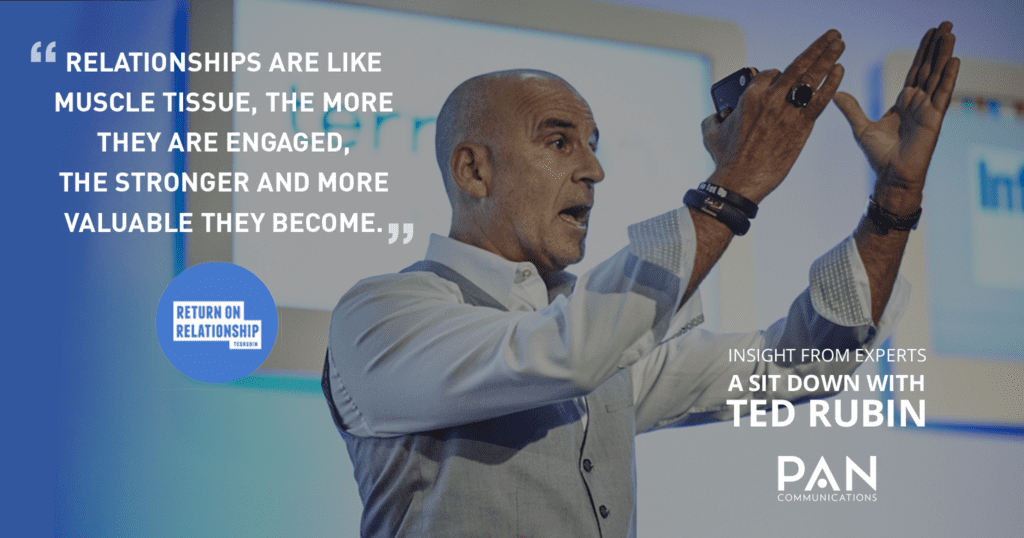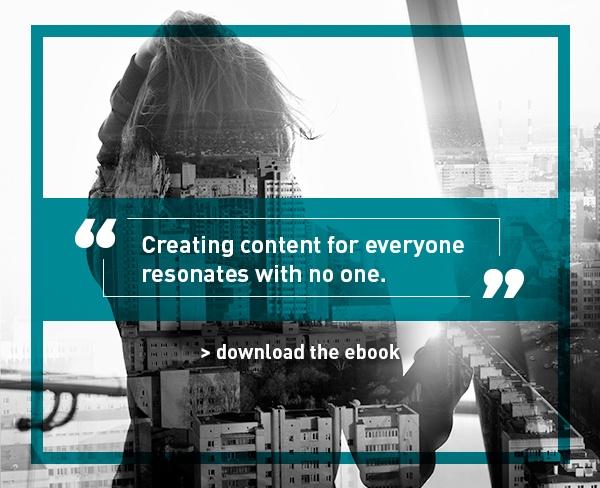Mark Nardone, EVP at PAN Communications, speaks with Ted Rubin, a leading Social Marketing Strategist, Keynote Speaker, Brand Evangelist and Acting CMO of Brand Innovators. Watch the video or read the transcript below and discover the power of influencers, how to engage and empower customers and the impact of brand transparency with the connected customer.
Interested in learning more? Check out other sections from the conversation here: Insight from Experts: The “Connection Economy” with Ted Rubin.
00:04:13
Mark Nardone Intro: The Empowered Customer
The empowered customer has so much influence on a brand’s both behavior, response, reputation – more than ever before. So, give me your take on the challenges or the concerns or the issues marketers are faced with, with that level of transparency. They’re still struggling with it!
00:04:24
Ted Rubin on the Empowered Customer:
People talk about influence (and unfortunately this is something I’ve been trying to steer brands, not away from, but open up their view) is that people talk about influencers and they come to define it as people with great influence instead of we all influence somebody. I’ve spoken to brands or individual brands or even social media experts, and I’ll say to them, ‘Why aren’t you talking to these people that have only a few followers?’ and they’re like, ‘Well, they only have a few followers.’ First of all: you never know who they’re following. I want to be talking to people, and you also never know who is following them.
By the way, I have a lot of followers and their bio is in Chinese, but if you really dig in and take the time to go see who’s following them, you’ll find that there are a lot of followers that speak English, that know what you’re saying. And we’re not paying for those followers, so why wouldn’t you want them engaged with you? You never know who knows somebody.
I intentionally, just about every day, go into the feed of somebody with a small following and share something that they shared – about themselves, about a brand, about something they’re concerned about – because I do have a lot of followers. Now, all of a sudden, that person with 100 followers just reached my seven-figure following. To me, that is where the real opportunity stands. The ability to communicate and have that communication scale. So I hear a lot of people saying – ‘How many people can we talk to?’ ‘Why should we bother talking when we have a million fans and followers?’ and ‘How many can you talk to in a day?’
My take to them is that the vast majority of people that follow you probably have no interest in talking to you, but they are watching the conversations. Just because they’re not tagging it or liking it or participating in it doesn’t mean that they’re not being influenced by it.
I’ve had brands say to me, ‘Well, we don’t want to open up that channel because we’re afraid – Oh my god, everybody is going to communicate!’ I’m like, ‘No, they’re not. They don’t care about you in that way.’
Most don’t want to communicate – but what they want is to know they can, when they need to. So when they see the brand respond to Mark, who’s got a concern – and that concern can be something mild, something little, and they recognize that concern. Everybody feels that connection. To me that’s where the real opportunity is on social, and that’s why I talk about converse and convert. I like to say the conversation is the best content.I’m sure there’s other great content and there’s better content, but that’s great content for a brand because they’re getting people talking in one way or another.
When someone talks about a brand, it spreads. They talk somewhere else (i.e. offline) and that, to me, is the real opportunity that most brands are afraid of. There’s a misconception: people think that the vast majority of brands are afraid because they’re afraid of what might get said. They’re really afraid because it’s incredibly hard work and because they’re just not ready to jump into it. That’s the real fear.
I’ve had a few clients call me in the middle of the night with something that erupted at their feet. And my answer to them is to leave it be. Let the conversation play out. You have a lot of followers. You watch – your advocates will jump in and defend you. But if they ask you a direct question, ‘Mark, why did you guys do this?’ Well, that requires an answer. But if they’re just saying, ‘Mark sucks!’… When people say ‘Ted sucks!’ I don’t respond. Sometimes I even like it.
Brands are getting more comfortable with that respect. But what they’re still afraid of is ‘How do we train everybody?’ ‘How do we manage that?’ ‘How do we listen to it all?’ And again there are a few that I think are mis-founded as they think too many people are going to jump in and talk to them.
Some brands are getting rid of regular customer service totally and doing it via social. What they’ve learned is that, number one: the efficiency of it. Number two: is, you know, JetBlue has a saying that when one person is complaining, there’s a good bet that there’s another 150 people with the same complaint. If they answer it publicly, they stop 149 other people – whatever percentage of it would – from calling in and complaining about it and asking a question because now it’s been answered. I think a lot of brands are missing that opportunity. Brands have to learn how to communicate differently and realize that if we’re open, upfront and honest, if we take advice, right up front…
I mean, I think Delta did a great job with it. They had this ridiculous collapse, and they came out and said, ‘Listen, we have a failure with our systems,’ and they came out and said, ‘Yes, we have back up, then the back-up failed.’ And they said, ‘We’re going to get to the bottom of this. We’re going to fix it.’ But what they could have done was said, ‘Oh, we’re on it right now; we’re going to have it fixed; we’re going to get it done.’ But they went with past experience they’ve had over the last few years. Delta is not necessarily my favorite brand on social, but they’re doing a great job. Their curve is like this [upward sloping from left to right]. They took a lot of big lead from JetBlue – they’ve been watching them. You see videos on their planes now from their CEO talking about the things they’re doing. And what I love, is they’ve actually walked the walk these last few days. They were very upfront and honest. I just want to say that I think Delta did a remarkable job. I think that’s a real key to a lot of brands. They made a statement up top. They’ve been building their culture to bring it down into the workforce and all of a sudden they have this crisis, and it was a crisis. Have you heard horrible things on social? I have not. Imagine on a corporate, brand and enterprise scale when there are those kinds of failures, and there are going to be those kind of failures.




